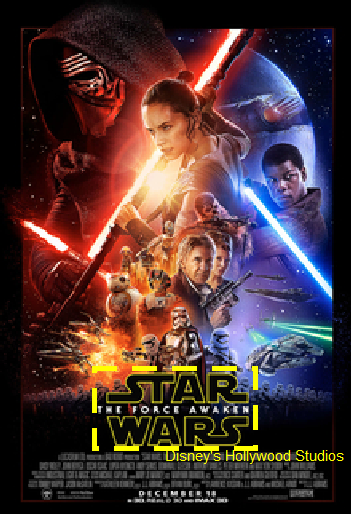An Interface for Image Recognition.
imgrec
Image Recognition with R
imgrec provides an interface for image recognition using the Google Vision API. It includes functions to convert data for features such as object detection and optical character recognition to data frames. The package also includes functions for analyzing image annotations.
How to Install
You can download and install the latest development version of imgrec with the devtools package by running devtools::install_github('cschwem2er/imgrec').
For Windows users installing from github requires proper setup of Rtools.
The package can also be installed from CRAN by running install.packages('imgrec').
How to Use
Authentification
Before loading imgrec you first need to initiate your authentification credentials. You need an API key from a Google Project with access permission for the Google Vision API. For this, you can first create a project using the Google Cloud platform. The setup process is explained in the API documentation. You will probably need to enable billing, but depending on your feature selection up to 1000 requests per month are free (see pricing). Next following the instructions for creating an API key. Finally, the API key needs to be set as environment variable before using the initialization function gvision_init():
Sys.setenv(gvision_key = "Your Google Vision API key")
library(imgrec)
gvision_init()
#> Succesfully initialized authentification credentials.
In order to avoid calling Sys.setenv, you can permanently store the API key in your .Renviron. I recommend usethis::edit_r_environ() to find and edit your environment file.
Image annotations
Google Vision accepts common file types such as JPG, PNG, or BMP. Images can be passed to the function get_annotations, either as url strings or file paths to local images. In the following example, get_annotations is used to retrieve annotations for a poster of the Star Wars movie The Force Awakens.

sw_image <- 'https://upload.wikimedia.org/wikipedia/en/a/a2/Star_Wars_The_Force_Awakens_Theatrical_Poster.jpg'
results <- get_annotations(images = sw_image, # image character vector
features = 'all', # request all available features
max_res = 5, # maximum number of results per feature
mode = 'url') # determine image type
#> [1] "Sending API request(s).."
The function returns a response object from the Google Vision API. It also recognizes if a user passes a character vector with multiple images. In this case, request batches are created automatically to reduce the number of required calls to the API. After retrieving annotations, raw data can be stored in an UTF-8 encoded JSON file:
temp_file_path <- tempfile(fileext = '.json')
save_json(results, temp_file_path)
While some users might prefer to work with raw .json data, which includes every single detail returned by the API, the structure is quite complex and deeply nested. To simplify the data, parse_annotations converts most of the features to data frames. For each feature, the original identifier of each image is included as img_id.
img_data <- parse_annotations(results) # returns list of data frames
names(img_data) # all available features
#> [1] "labels" "web_labels" "web_similar"
#> [4] "web_match_partial" "web_match_full" "web_match_pages"
#> [7] "web_best_guess" "faces" "objects"
#> [10] "logos" "full_text" "safe_search"
#> [13] "colors" "crop_hints"
Once the features are converted to data frames, other R packages can be used to analyze the data. For instance, the labels data frame contains annotations about image content:
img_labels <- img_data$labels
head(img_labels)
| mid | description | score | topicality | img_id |
|---|---|---|---|---|
| /m/01n5jq | Poster | 0.8570013 | 0.8570013 | https://upload.wikimedia.org/wikipedia/en/a/a2/Star_Wars_The_Force_Awakens_Theatrical_Poster.jpg |
| /m/07c1v | Technology | 0.7384903 | 0.7384903 | https://upload.wikimedia.org/wikipedia/en/a/a2/Star_Wars_The_Force_Awakens_Theatrical_Poster.jpg |
| /m/081pkj | Event | 0.6845369 | 0.6845369 | https://upload.wikimedia.org/wikipedia/en/a/a2/Star_Wars_The_Force_Awakens_Theatrical_Poster.jpg |
| /m/02h7lkt | Fictional character | 0.6801612 | 0.6801612 | https://upload.wikimedia.org/wikipedia/en/a/a2/Star_Wars_The_Force_Awakens_Theatrical_Poster.jpg |
| /m/02kdv5l | Action film | 0.6731423 | 0.6731423 | https://upload.wikimedia.org/wikipedia/en/a/a2/Star_Wars_The_Force_Awakens_Theatrical_Poster.jpg |
The package also extracts bounding polygons for logos, objects, faces and landmarks. We can for instance visualize all recognized logos of the Star Wars movie poster with magick and ggplot2:
library(magick)
library(ggplot2)
img <- image_read(sw_image)
[!!] There is currently a bug when using magick and ggplot2 which leads to upside down annotations. A temporary work around is to subtract image width height (y) values (see code below).
image_ggplot(img) +
geom_rect(data = img_data$logos,
aes(xmin = poly_x_min, xmax = poly_x_max,
ymin = 322 - poly_y_min, ymax = 322 -poly_y_max),
color = 'yellow', fill = NA, linetype = 'dashed', size = 2,
inherit.aes = FALSE) +
geom_text(data = img_data$logos,
aes(x = poly_x_max, y = 322 - poly_y_max, label = description),
size = 4, color = "yellow", vjust = 1) +
theme(legend.position="none")

Please note that for object recognition data, bounding polygons are relative to image dimensions. Therefore, you need to multiply them with image width (x) and height (y). These attributes are not returned by Google Vision, but can for instance be identified with magick::image_info():
img_info <- image_info(img)
img_info
#> # A tibble: 1 × 7
#> format width height colorspace matte filesize density
#> <chr> <int> <int> <chr> <lgl> <int> <chr>
#> 1 JPEG 220 322 sRGB FALSE 136703 28x28
Additional functions for feature analysis are currently in development.
Citation
Please cite imgrec if you use the package for publications:
Carsten Schwemmer (2024). imgrec: Image Recognition. R package version 0.1.3.
https://CRAN.R-project.org/package=imgrec
A BibTeX entry for LaTeX users is:
@Manual{,
title = {imgrec: Image Recognition},
author = {Carsten Schwemmer},
year = {2024},
note = {R package version 0.1.4},
url = {https://CRAN.R-project.org/package=imgrec},
}